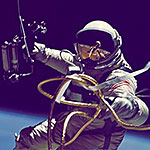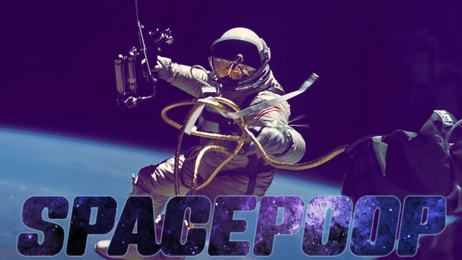Open Innovation Call to Help Astronauts Poop Safely in Space
Published Feb-27-17Breakthrough:
A small airlock for space suits to help astronauts manage bodily waste material safely.
Company:
NASA, United States
The Story:
 When you need to go, you need to go. But, what if you’re an astronaut on a spacewalk outside the International Space Station and you get the call of nature? Currently, you would relieve yourself in the adult diapers you are wearing under your space suit. But if you were to be caught up in an emergency and you had to stay in your suit for a few days, what would you do then with regards to your natural wastage? Unable to get rid of it, the material could accumulate and become potentially life threatening.
When you need to go, you need to go. But, what if you’re an astronaut on a spacewalk outside the International Space Station and you get the call of nature? Currently, you would relieve yourself in the adult diapers you are wearing under your space suit. But if you were to be caught up in an emergency and you had to stay in your suit for a few days, what would you do then with regards to your natural wastage? Unable to get rid of it, the material could accumulate and become potentially life threatening. To help NASA develop new ways to treat bathroom waste so that it doesn’t harm astronauts, the space agency organized an open innovation competition called the Space Poop Challenge. It invited people to submit designs for a waste management system inside a space suit that could collect human waste for up to six days and route it away from the body without astronauts having to use their hands.
Participants were reminded that their concepts had to work in microgravity where what happens while at toilet is a little different from here on Earth. For example, even though solids, liquids, and gases float in a vacuum, they also cling to the nearest surface. With regards to bodily fluids, there is no gravity to direct them away from the body. All of this means waste material could cling to an astronaut’s skin for days on end, which if left untreated might cause infections.
The commercial products currently available are not meant to be used for more than 144 hours. Some require the use of hands to get urine away from the body and others do not. And there is no commercial product for fecal waste management for a 144-hour period with or without the use of hands. With the space agency working toward sending people beyond low-earth orbit, astronauts may need to stay in their suits for much longer durations, so there is a pressing need for innovation.
Following the two-month submission phase, judges pored over the concepts and selected three winners. More than 20,000 people from all over the world had sent in over 5,000 ideas.
In first place was air force officer, flight surgeon and family practice physician Thatcher Cardon who was awarded $15,000. Inspired by keyhole surgery he came up with a small airlock located in the groin area of the spacesuit, in which can be inserted such items as bedpans and diapers which could then be expanded.
Second place and a check for $10,000 went to a team from Houston that developed an “air-push urinary girdle” that uses air to force urine or menstrual waste through an exit tube. Hugo Shelley a designer from Britain came in third, winning $5,000 for his external catheter-based design that works with a mechanism for compressing, sealing and sanitizing solid waste and then storing it in the back of the suit.
Poop System Plans for the Future
The open innovation challenge may be over, but the winners are going to have their designs incorporated into prototypes that will be tested on the International Space Station. Eventually the new waste management system will be integrated into the Modified Advanced Crew Escape Suit (MACES), which has been adapted for missions that are longer than the original Advanced Crew Escape Suit (ACES) was designed for.
Next Story »

